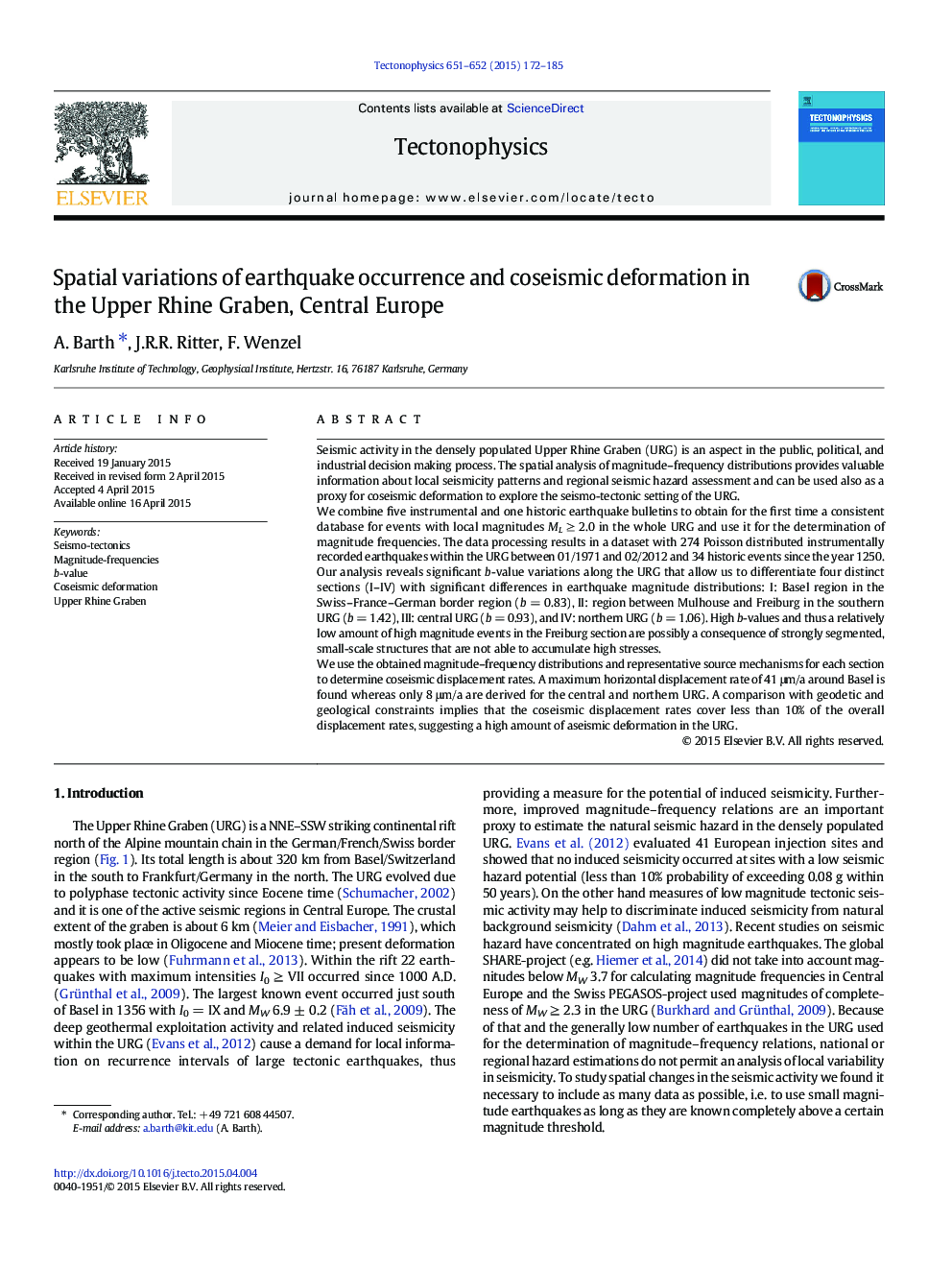| کد مقاله | کد نشریه | سال انتشار | مقاله انگلیسی | نسخه تمام متن |
|---|---|---|---|---|
| 4691632 | 1636743 | 2015 | 14 صفحه PDF | دانلود رایگان |
• We combine 6 earthquake bulletins to obtain a consistent catalogue ML ≥ 2.0 in the URG.
• The b-value varies significantly and allows a quantitative separation in 4 sections.
• Basel: b = 0.83, Mulhouse/Freiburg: b = 1.42, central URG: b = 0.93, northern URG: b = 1.06
• High b-values may be due to segmented structures, not able to accumulate high stresses.
• High amount of aseismic deformation in the URG (≤ 10% coseismic displacement)
Seismic activity in the densely populated Upper Rhine Graben (URG) is an aspect in the public, political, and industrial decision making process. The spatial analysis of magnitude–frequency distributions provides valuable information about local seismicity patterns and regional seismic hazard assessment and can be used also as a proxy for coseismic deformation to explore the seismo-tectonic setting of the URG.We combine five instrumental and one historic earthquake bulletins to obtain for the first time a consistent database for events with local magnitudes ML ≥ 2.0 in the whole URG and use it for the determination of magnitude frequencies. The data processing results in a dataset with 274 Poisson distributed instrumentally recorded earthquakes within the URG between 01/1971 and 02/2012 and 34 historic events since the year 1250.Our analysis reveals significant b-value variations along the URG that allow us to differentiate four distinct sections (I–IV) with significant differences in earthquake magnitude distributions: I: Basel region in the Swiss–France–German border region (b = 0.83), II: region between Mulhouse and Freiburg in the southern URG (b = 1.42), III: central URG (b = 0.93), and IV: northern URG (b = 1.06). High b-values and thus a relatively low amount of high magnitude events in the Freiburg section are possibly a consequence of strongly segmented, small-scale structures that are not able to accumulate high stresses.We use the obtained magnitude–frequency distributions and representative source mechanisms for each section to determine coseismic displacement rates. A maximum horizontal displacement rate of 41 μm/a around Basel is found whereas only 8 μm/a are derived for the central and northern URG. A comparison with geodetic and geological constraints implies that the coseismic displacement rates cover less than 10% of the overall displacement rates, suggesting a high amount of aseismic deformation in the URG.
Figure optionsDownload as PowerPoint slide
Journal: Tectonophysics - Volumes 651–652, 31 May 2015, Pages 172–185
